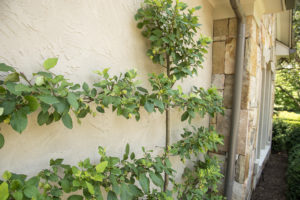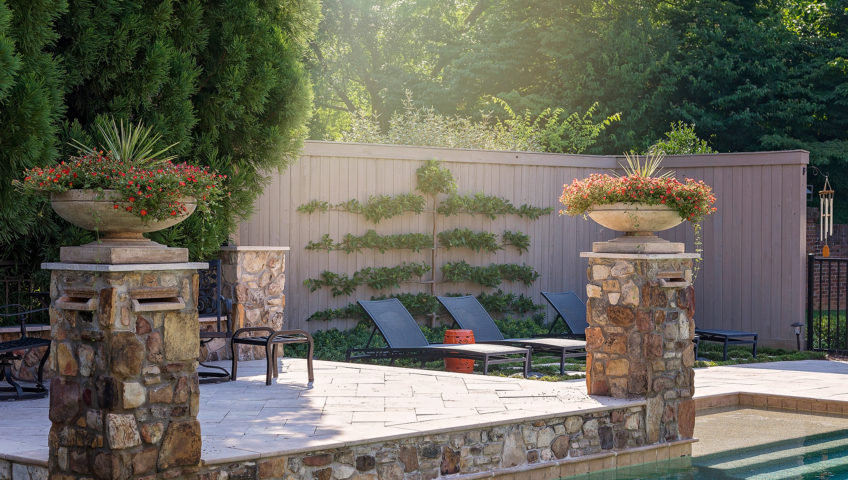Whether you long for a garden but have limited lawn space, or you’re trying to add a distinctive new touch to your landscaping, espalier trees might be the solution. An ancient horticultural practice with a storied past, espalier trees are woody plants pruned into structured shapes. These shapes coax apple or pear trees into more efficient harvests, give structure to formal gardens, and add a decorative accent to a bare wall. A well-kept espalier tree is like a living, growing sculpture.
History
Espalier trees date as far back as ancient Rome, but it wasn’t until the Middle Ages that the technique became an art. Originally, espalier trees were a way to save space– trees were trained to grow in a flat plane, with the branches contained on either side of the trunk rather than spreading in every direction. In colder climates, fruit trees were espaliered against a wall to protect from the cold and encourage fruit to ripen.
The practice spread to French monasteries and cloisters and medieval castle walls, where every inch of small, available yard was resourced. The pruning techniques resulted in less dense foliage, exposing the fruit to direct sunlight for faster ripening and a bountiful crop.
Over the years, this gardening technique spread all the way across the ocean to historic plantations like George Washington’s Mount Vernon, where the first commander-in-chief’s own espaliered hedges can still be seen today.
In modern times, espaliers add an ornamental touch to any landscape, particularly in small yards or in narrow spaces where plants might not otherwise have room to grow.
Suitable Species
Almost any plant can be espaliered, but plants that naturally produce spry, flexible branches and offer decorative elements such as flowers, foliage, and/or fruit make the best candidates. Species ideal for the espalier technique include hollies, peach and pear trees, gardenia, juniper, and vines such as jasmine or climbing fig. Espalier fruit trees are the most common types and offer a practical way to grow fresh produce in your backyard even with limited real estate.

The Technique
Maintaining espaliered plants requires patience and a certain artistic flair. Each tree or vine requires heavy attention and care for the first year or two of its growth. After the plant has matured, it should require only occasional maintenance to hold the desired shape.
Espaliered plants can take a number of classic forms. Branches can be arranged into a crisscrossing lattice or trellis shape, a candelabra, a cordon, a fan, and more. And there’s no need to limit the shapes to a rigid pattern– espalier trees can be coaxed into all kinds of abstract shapes to add a more avant-garde aesthetic to your lawn or garden.
Typically, espaliers are planted 6 to 8 inches away from a wall, trellis, or lattice to help restrict growth and maintain the flat shape. Fruit trees also need a location that gets plenty of sun to encourage a good harvest. Then, the branches are tied to a wire framework nailed to the wall or to posts set in the ground to gently bend the branches into their desired shapes. These ties are gradually repositioned to guide the branches as they grow. Extraneous branches and shoots that don’t fit the shape are continuously pruned as the plant matures.

Espaliering is a complex technique that can be hard to master and takes a considerable amount of time. Lawn Butler works with experienced growers and nurseries found throughout Tennessee to provide our clients with high-quality services and products, including espalier trees. Contact us if you would like to explore if an espalier tree is an artistic addition to your landscape.


